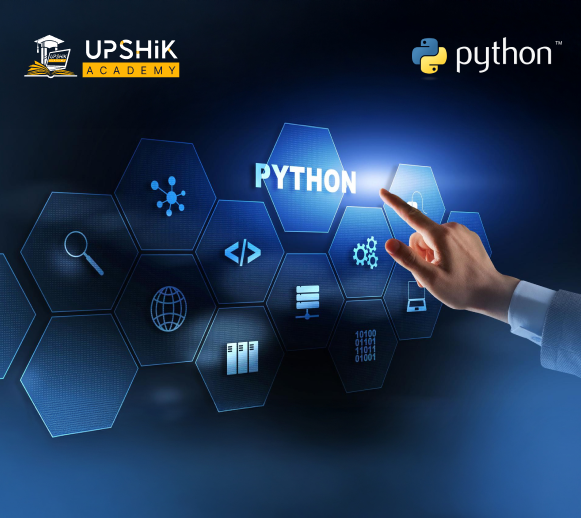Master Python Full Stack Development: Build Web Apps from Scratch

Launch your tech career with our hands-on Python Full Stack Development course. Learn front-end and back-end technologies, including HTML, CSS, JavaScript, Python, Django, REST APIs, and databases. From building responsive interfaces to deploying dynamic web applications, this course equips you …
Launch your tech career with our hands-on Python Full Stack Development course. Learn front-end and back-end technologies, including HTML, CSS, JavaScript, Python, Django, REST APIs, and databases. From building responsive interfaces to deploying dynamic web applications, this course equips you with real-world skills to become a job-ready full-stack developer.
About Course:
Step into India’s most comprehensive Python Full Stack Development program at Upshik Academy—designed for learners from Kolkata to Kochi and Chandigarh to Chennai. This end-to-end course blends live interactive workshops, on-demand video resources, and cloud-hosted lab environments so you can master both front-end and back-end technologies using Python. From building dynamic user interfaces to architecting scalable APIs and databases, you’ll gain hands-on experience with the tools and frameworks that top recruiters in India demand.
What will you learn?
- Web Frameworks: Develop server-side applications with Django and Flask; build RESTful APIs and integrate third-party services.
- Front-End Development: Craft responsive UIs using HTML5, CSS3, Bootstrap, and JavaScript (ES6+); introduction to React or Vue.js for single-page applications.
- Databases & ORMs: Design relational schemas in PostgreSQL/MySQL and NoSQL structures in MongoDB; use Django ORM and SQLAlchemy for data modeling.
- Authentication & Security: Implement JWT, OAuth2, role-based access control, input validation, and secure password storage.
- DevOps & Deployment: Containerize applications with Docker; orchestrate with Kubernetes basics; deploy to AWS, Azure, or DigitalOcean using CI/CD pipelines (GitHub Actions, Jenkins).
- Testing & Debugging: Write unit, integration, and end-to-end tests with PyTest, Selenium, and Postman; use logging and debugging tools for production readiness.
- Performance & Optimization: Caching strategies with Redis, database indexing, asynchronous task queues with Celery, and performance profiling.
- 39 Sections
- 247 Lessons
- 60 Days
- (Java Script Training Course Content) Module 1: Core JavaScript8
- Module 2: Advance JavaScript5
- (HTML , CSS Course Syllabus) Module 1: Introduction to WEB4
- Module 2: Core HTML5
- Module 3: Advance HTML510
- Module 4: Core CSS11
- Module 5: Advance CSS10
- (Python Course Syllabus) Module 1: Core Python11
- Module 2: Different Modes in Python6
- Module 3: Variables in Python8
- Module 4: Python Conditional Statements9
- 11.1How to use “if condition” in conditional structures
- 11.2if statement (One-Way Decisions)
- 11.3if .. else statement (Two-way Decisions)
- 11.4How to use “else condition”
- 11.5if ..elif .. else statement (Multi-way)
- 11.6When “else condition” does not work
- 11.7How to use “elif” condition
- 11.8How to execute conditional statement with minimal code
- 11.9Nested IF Statement
- Module 5: Python LOOPS6
- Module 6: Python Lists8
- Module 7: Python TUPLE8
- Module 8: Python Sets7
- Module 9: Python Dictionary9
- Module 10: Python Functions16
- 17.1What is a Function?
- 17.2How to define and call a function in Python
- 17.3Types of Functions
- 17.4Significance of Indentation (Space) in Python ➢ How Function Return Value?
- 17.5Types of Arguments in Functions
- 17.6Default Arguments
- 17.7Non-Default Arguments
- 17.8Keyword Arguments
- 17.9Non-keyword Arguments
- 17.10Arbitrary Arguments
- 17.11Rules to define a function in Python
- 17.12Various Forms of Function Arguments
- 17.13Scope and Lifetime of variables
- 17.14Anonymous Functions/Lambda functions
- 17.15map(), filter(), reduce() functions
- 17.16What is a Docstring?
- Module 11: Advanced Python9
- Module 12: Python Class and Objects9
- Module 13: Python Regular Expressions5
- Module 14: Bootstrap (Powerful Mobile Front-End Framework)6
- Module 15: Bootstrap Grid System6
- Module 16: Grid Options3
- (Django Course Syllabus) Module 1: Django Web Framework7
- Module 2: MVC Pattern2
- Module 3: Getting Started with Django7
- Module 4: Create an Application6
- Module 5: Django – Admin Interface2
- Module 6: Views Layer3
- Module 7: Django – URL Mapping7
- Module 8: Django Template Language (DTL)4
- Module 9: Django – Models4
- Module 10: Django – Sending E-Mails4
- Module 11: Django – Form Processing4
- Module 12: Django – File Uploading2
- Module 13: Django – Cookies Handling2
- Module 14: Django Admin5
- Module 15: Static files4
- Module 16: Deployment5
You might be intersted in
Welcome to UpShik Academy, your premier online EdTech platform dedicated to empowering students and professionals with cutting-edge digital learning and skill development.
- +91 73960 67744
- contact@upshikacademy.com
Quick Links
Address
- Viswa Bharati Enclave 2nd Floor, Bairagi patteda, Tirupati, Andhra Pradesh 517501
- No 5, 2nd Cross Rd, near Manyata Tech Park Road, P&T Layout, Bengaluru, Karnataka 560077.
- Gronnvej 268, 2th Sorgenfri Virum -2830 Copenhagen capital region Denmark.
Copyright © Upshik Academy | Developed By ZenWareIT Software Solutions LLP

